Splash! A boil forms, followed by a big kick with water splashing onto the dangling mangrove leaves. The drag starts to scream again as the line takes off. I see a flash of red near the surface as the fish fights to get off the hook, while nearby bait gets scared and runs off. After more cranking and line tension balancing, I finally bring it in…
“This one has got to be my PB!” I think. And sure enough, it is – confirmed after I measure it. To be honest, the measuring wasn’t really needed.
I slowly release my catch into the water – ensuring it’s revived well – and watch her swim into the deep.
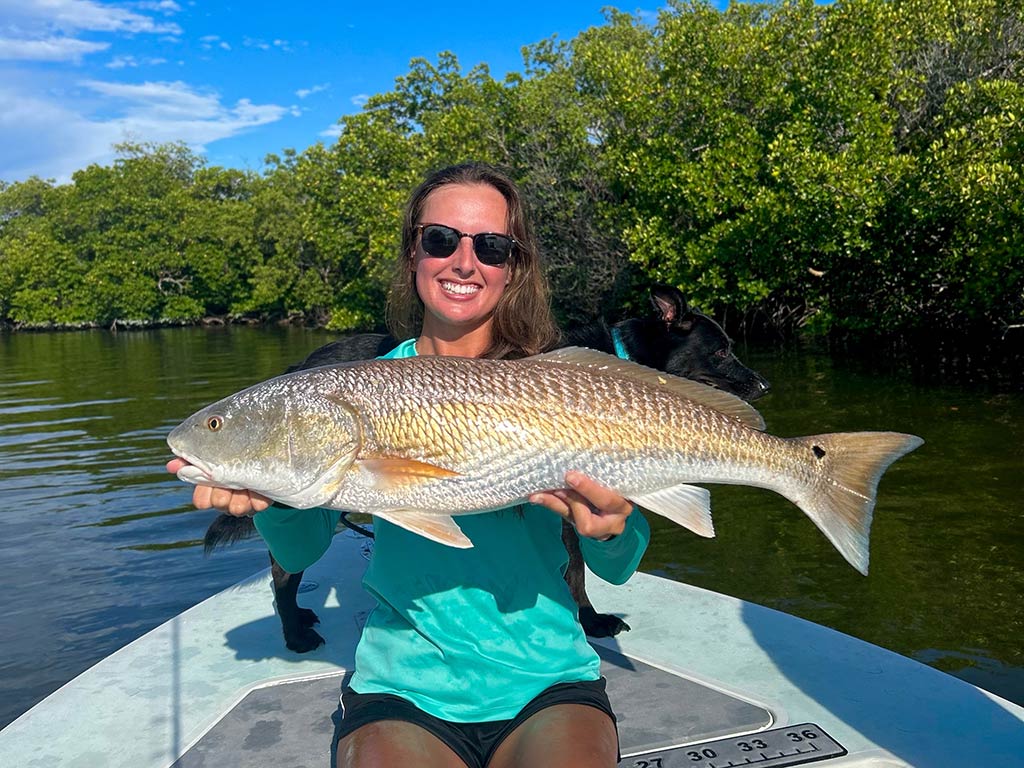
That was my experience catching my personal best and first “Bull” Redfish. I could tell once I got my hands on the fish and saw it up close that it was my PB. It was truly a remarkable fight, catch, and feeling.
Redfish are already pretty incredible with their gorgeous colors, incredible strength, and great taste. But when you get your hook (and hands) on a Bull Redfish, you’ll feel changed. So, if you’re looking to find out how you can get your hands on a Bull of your own, keep following along. I’m here to share my experience and to help you learn all the tips, techniques, and more.
What is a Bull Redfish?
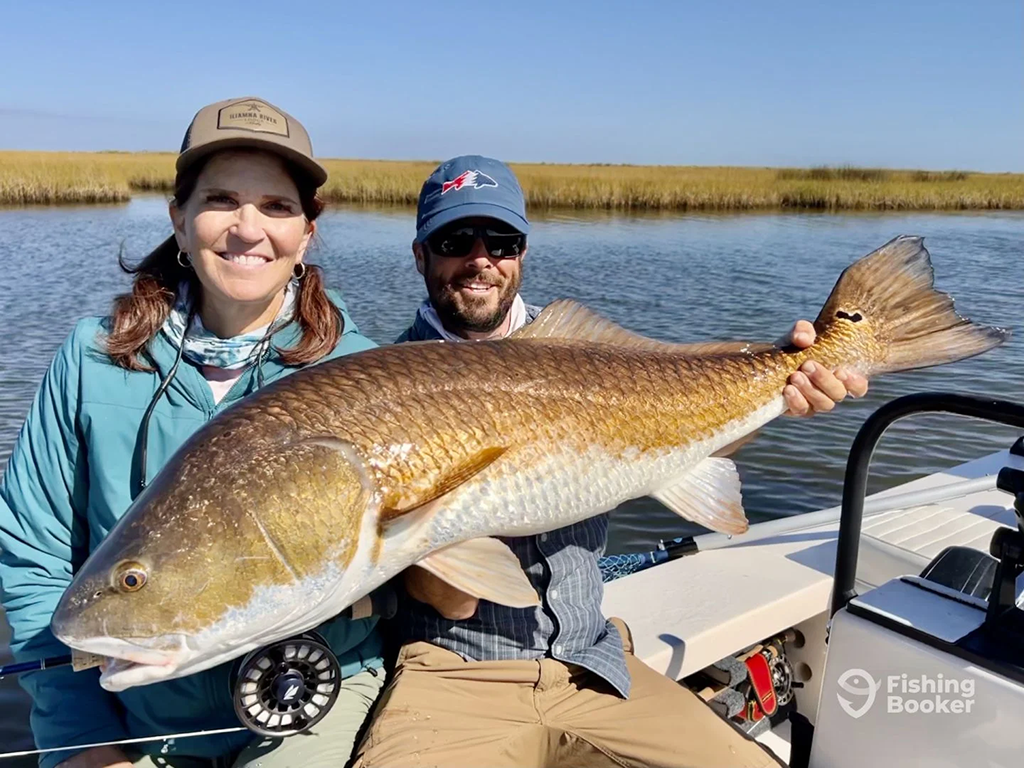
A bull Redfish is a large Redfish – aka Red Drum – that measures roughly over 30 inches. They can often be pretty thick and heavy with big heads. The exact length hasn’t been confirmed scientifically, and a lot of people have different opinions. However, 30 inches is an average – and what I go by as well.
When can I target Bull Redfish?
You can catch Redfish year-round, as they’re quite abundant and active throughout the year. But of course, there are certain times when they may be more active and hungry than others. Dusk and dawn hours in fall, in particular, are often the peak of Redfish fishing because this is when the big breeders come closer to shore to spawn and feed.
Spring and summer can also be productive for targeting Bull Redfish, as the warmer temperatures keep fish and bait busy and hungry. They often stroll flats, mangroves, oyster beds, and island points on a high tide in search of a tasty treat. Winter cold fronts can stir up their feistiness, too, making them prone to bite even if they’re migrating in deep waters.
Where to Find Bull Redfish
Bull Redfish roam various habitats on the search for prey across southern coastal states, especially Texas, Louisiana, and Florida. You can find them within and along mangrove areas, beaches, flats, and even offshore waters during their migrations. During spawning season, they come into inlets, rivers, and estuaries to lay eggs and stock up – giving you more chances to catch smaller ones.
But, from my experience, the following hotspots will give you excellent opportunities to find and hook up to some big beasts:
Mosquito Lagoon, FL

Florida’s Mosquito Lagoon is a legendary hotspot for Bull Redfish. Massive Reds thrive in the shallow flats, tailing and creating wakes as they hunt for crabs and mullet. The gorgeous – often clear – water gives you a front-row seat for sight casting opportunities. The lagoon’s thriving ecosystem makes it one of the best places to encounter trophy Redfish year-round.
Ten Thousand Islands/The Everglades, FL
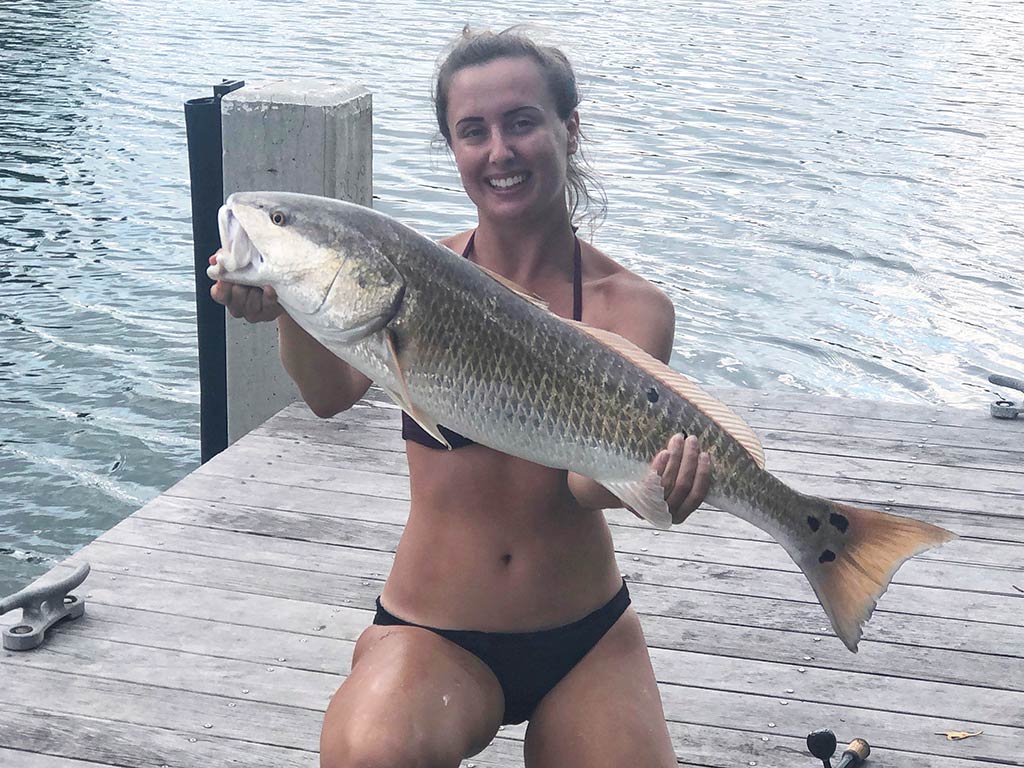
My home area, the Ten Thousand Islands and the Everglades, boasts amazing fisheries. We have tons of species that frequent our areas every season, and Redfish happen to be one of them. We are known for the Bull Reds that frequent our flats, mangroves, and oyster beds. I’ve caught a few large ones but haven’t got my 10K Bull Red – yet!
Galveston Bay, TX

Many Bull Redfish call the big, beautiful state of Texas home. And there’s nowhere better than the rich waters of Galveston Bay. You’ll find big schools off the coast in deeper waters, as well as a bunch hanging around oyster bars and small reefs. They enjoy feeding off structure and like to travel together when migrating here, giving you the chance of multiple hookups.
Hampton River, GA

The Hampton River of Georgia holds a lot of cruising Redfish that travel the river and surrounding marsh edges, especially where currents push bait fish into ambush zones. They gather near and feed heavily at oyster beds and drop-offs. Known for their strength and size, Hampton River Bull Redfish provide the most exciting action on Georgia’s coast.
Venice, LA
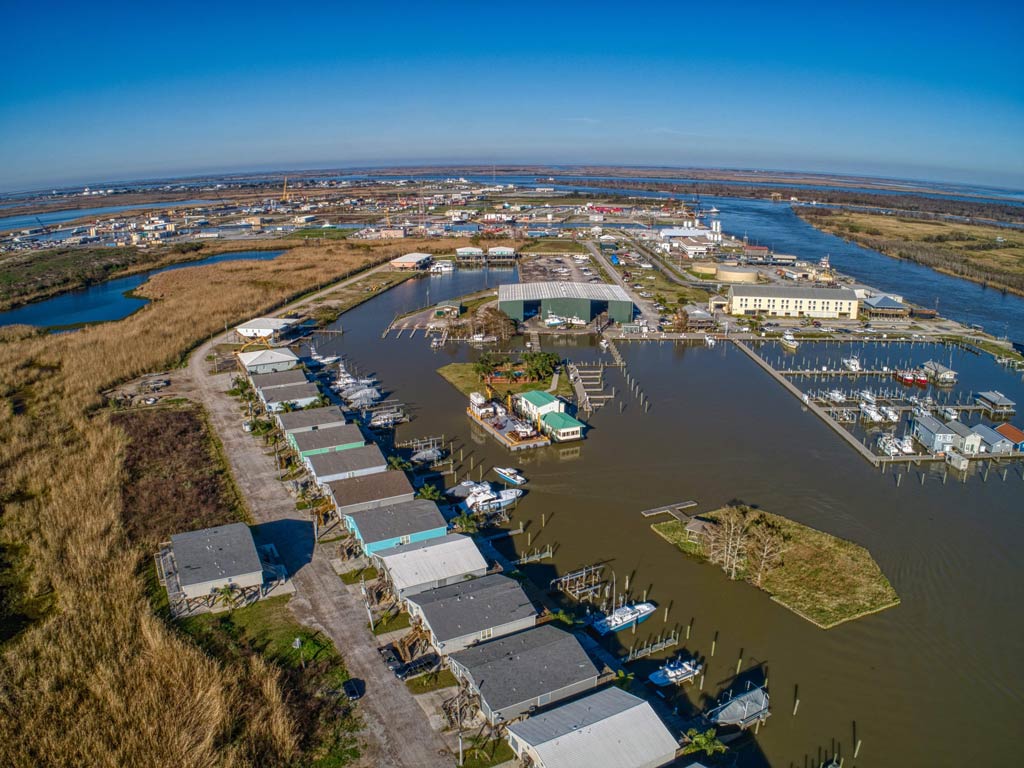
Another Gulf state, Louisiana, is a great hotspot for Bull Redfish. Spots like Venice boast productive habitats where tailing Reds search the shallows for food. You can find them throughout the marshes and bayous, along the jetties, the shoreline, and out in the open.
How to Target Bull Redfish
Let’s get into the meat of how exactly you can target Bull Reds. From the setups, lines, hooks, live and artificial bait, to the steps, techniques, and more, I’ve got you covered. Let’s dive in…
Gear and Bait
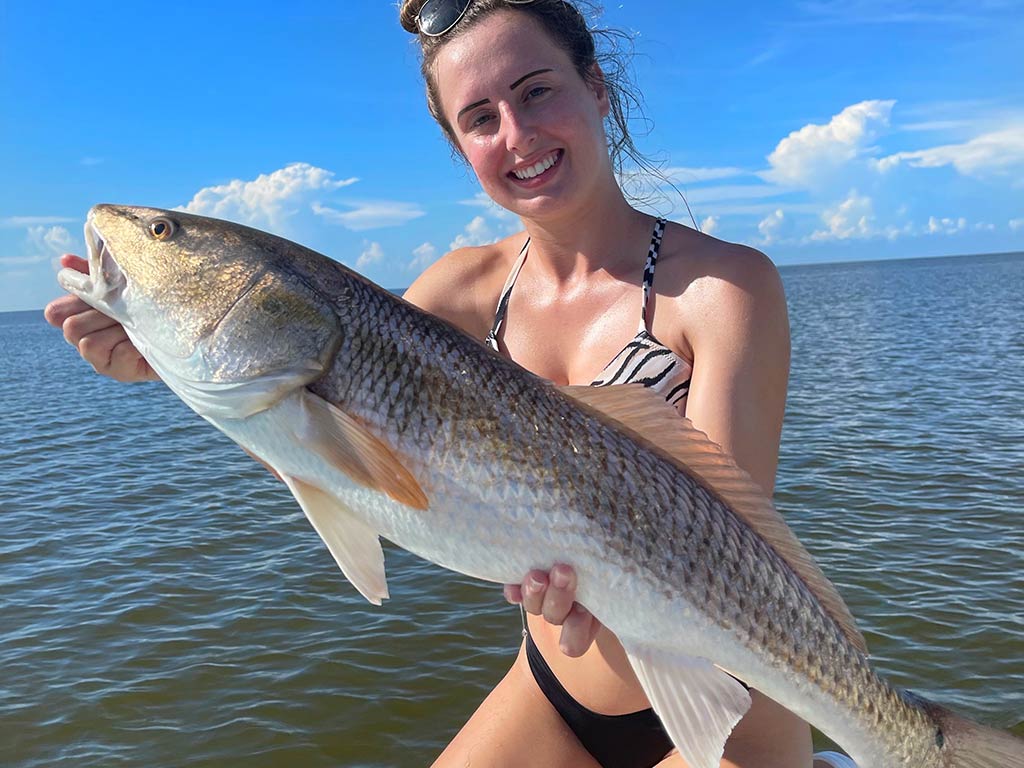
You’ll want a durable and strong setup when targeting Bull Redfish. I use my 5000 spinning reel with a medium-heavy rod. A 20 lb braid paired with 40 lb or higher fluorocarbon leader does the job, too. I’ll usually throw a decent mullet onto a 4/0 circle hook and let the mullet catch the Redfish’s attention underneath the surface. However, at dawn or dusk, I like to throw a topwater lure to entice them with the clicking motion on top of the waves. It’s pretty exciting to see them strike on top of the water!
Popping corks, weedless spoons, paddetails, and jigheads are also great tools for enticing Bull Redfish. Gulp Shrimp, DOA, and NLBN are all Redfish favorites in my area. However, live bait works well too. These brutes will strike on crab, pinfish, pogies, croakers, and shrimp.
Finally, I find that having a net is also helpful, because you need a bit of leverage to capture them, especially when scooping them out of the water from a boat.
Techniques
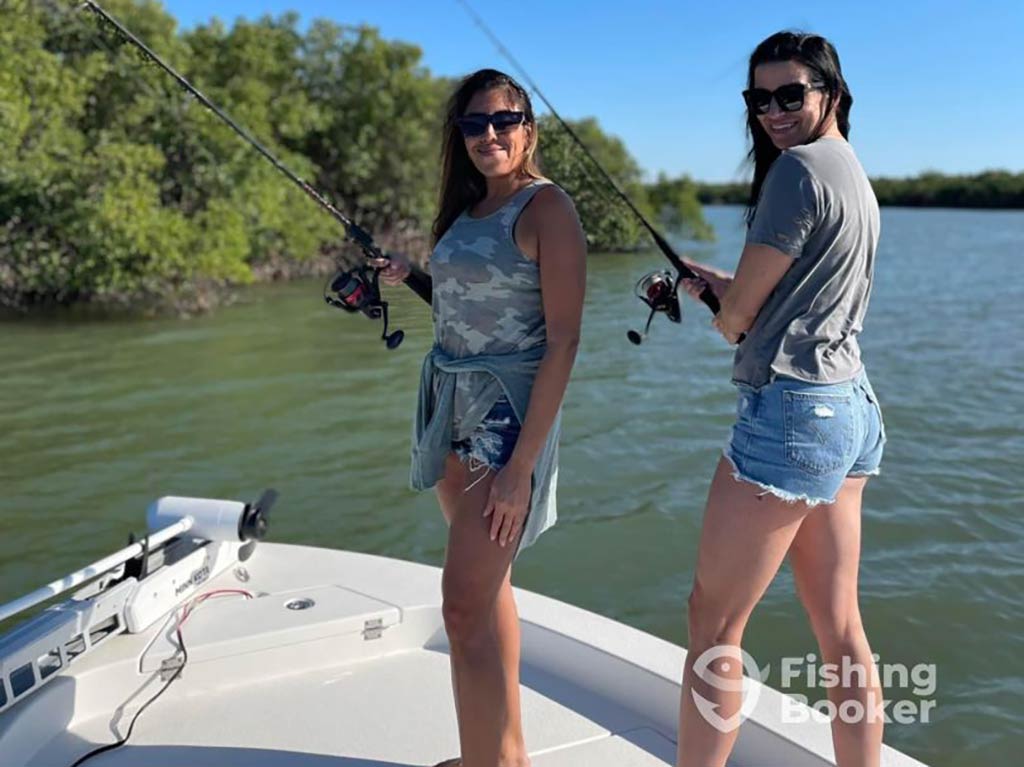
When I’m fishing with lures, I like to work them either on the bottom slowly or with quick or slow retrieves from the mangroves and structure. Either bouncing my lure along the bottom or letting it drift naturally with the current. For live bait, I cast it near structure or a flowing current and let it sit. A good bait presentation near mangrove branches, oyster beds, drop-offs, submerged structures, and rocky or grassy flats usually triggers a bite.
If the fish are feisty or it’s the early-morning frenzy hours, you can jerk and pause a topwater or popping cork to create noise and movement, drawing them in from a distance. In shallow waters, sight casting can be highly effective and rewarding. Keep an eye out for wakes or tailing Reds and present your bait just ahead of them, bringing it in for a precise strike.
Make sure to adjust your technique to the conditions, tide, and water clarity. Higher tides bring in more fish, so you can go further inshore and near structure. At lower tides, hang around points or nearshore reefs or wrecks. Don’t forget to choose between letting your live bait do the movement and attracting, or work your lures to present real, enticing behavior.
Bull Redfish Fishing Regulations
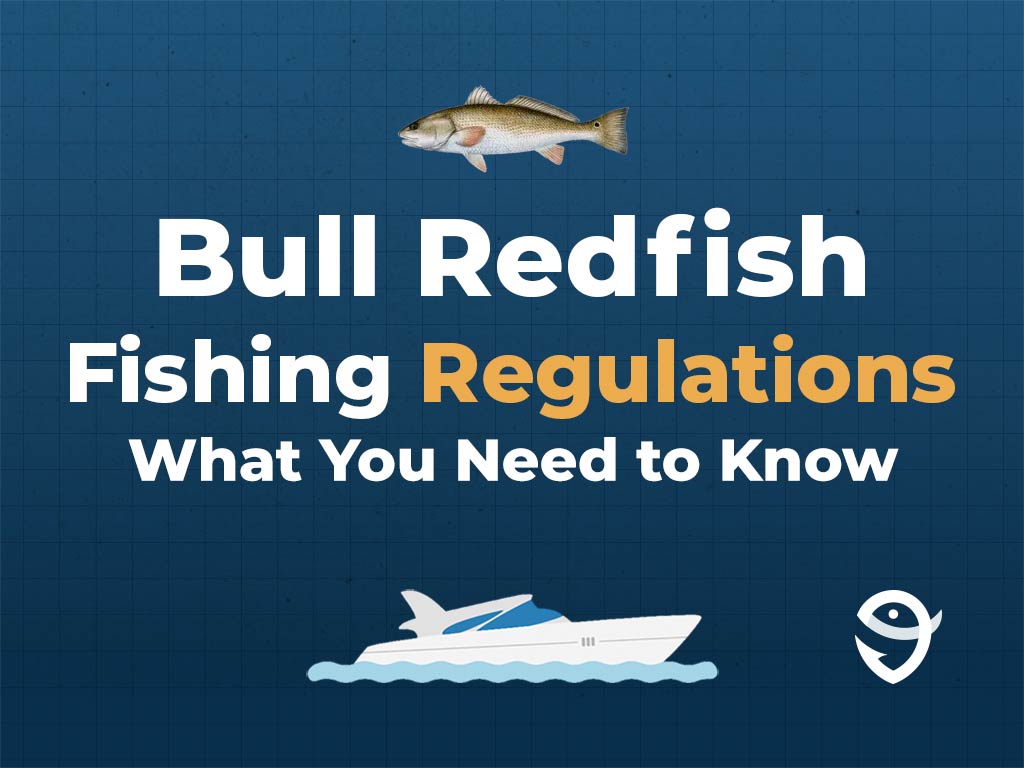
Before you head out to find your next trophy catch, make sure you’re aware of the regulations that surround Redfish. First of all, you’ll most likely need to have a valid and active fishing license for the state or region you’re fishing in.
Each state is different, so you’ll have to double-check the regulations on slot size, bag limits, and seasonality, too. Most Redfish fisheries are open year-round, but almost all regions differ with regards to the specifics, so don’t forget to check with the local fish and wildlife agency before keeping anything.
Bull Redfish FAQs
Get Your PB “Bull” Redfish!
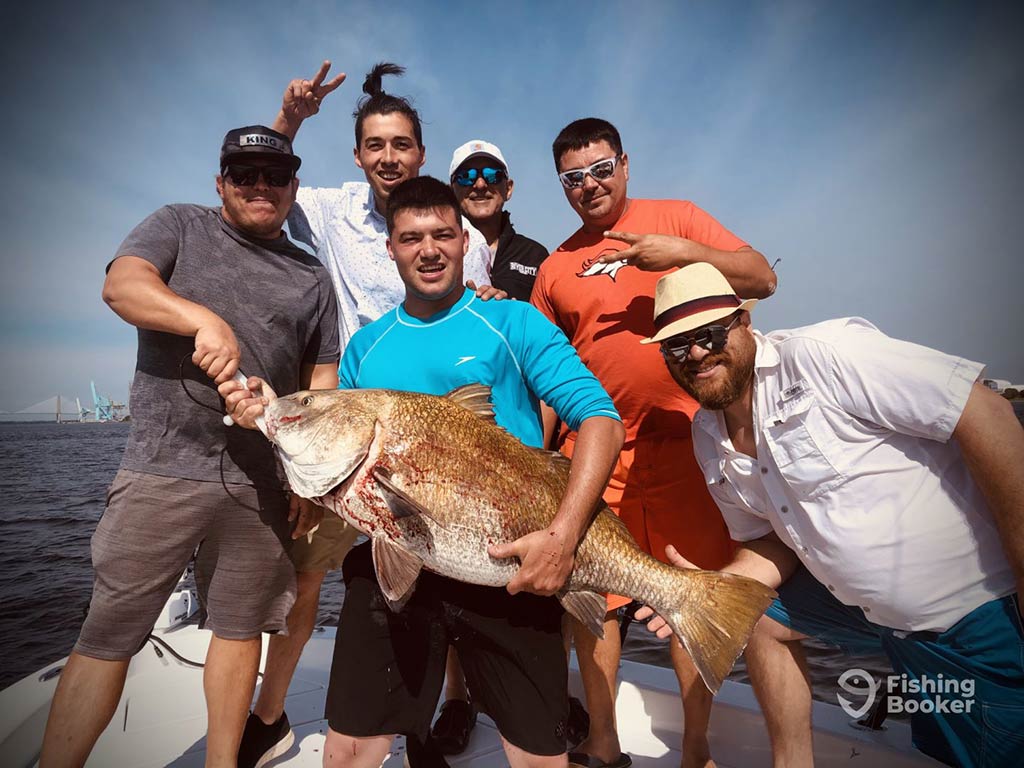
Chasing Bull Redfish isn’t just about fishing, it’s about igniting your passion further, accomplishing goals, and going past the limits. It’s about combining skill, patience, and practice as you battle a trophy fish that’s pulling you in all sorts of directions – it promises to keep your heart and mind racing! Locating and hooking up to a Bull Red may take some patience and effort, but once it happens, you’ll be hooked. Hopefully, this article has helped you on your journey.
Have you caught a Bull Redfish before? How big was it? Where did you catch it? We’d love to hear all your stories in the comments below!
The post Bull Redfish: An Expert’s Guide to Tackling These Monsters appeared first on FishingBooker Blog.
https://fishingbooker-prod-blog-backup.s3.amazonaws.com/blog/media/2025/08/22105055/redfish-everglades-caitlyn.jpg
0 Comments
Enregistrer un commentaire